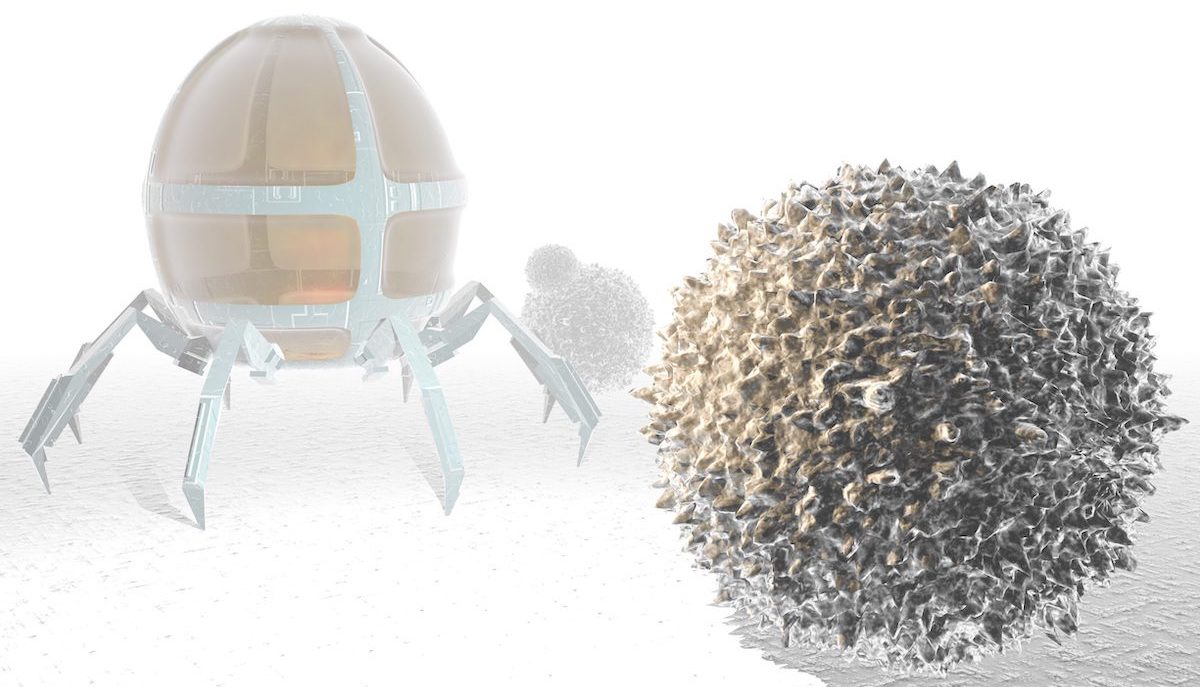Nanorobotics is an exciting field that’s constantly looking at new ways to develop and utilize tiny machines of 0.1-10 micrometers in size. And in a lot of ways, science is using the majesty of nature as its guide. While true nanorobots are still in development, biological machines like our bodies’ cells have always functioned in incredible ways despite their tiny size.
But when our cells malfunction, cancer can be the result. The idea of using nanotechnology to fix cellular errors is a promising one, but there are considerable challenges to be overcome. Scientists are working hard to develop reliable methods of assembly, control and communication, and power transfer.
Still, early studies are extremely promising. Following are five of the ways that nanorobots could be used to cure cancer.

Diagnosis
While we are not quite ready to deploy nanorobots on a large scale, a recent joint project by Arizona State University and China’s National Center for Nanoscience and Technology developed a robot that’s just a few hundred nanometers across. For scale, consider that an inch contains 25 million nanometers.
The robots are small enough to be injected into the bloodstream of mice. When researchers did so, they found that the robots circulated much as white blood cells do and were able to recognize cancerous cells when they found them.
This incredible tiny invention is able to do that because cancer cells use more glucose than healthy ones – up to 28% more. As a diagnostic tool, nanorobots may be able to alert doctors and their patients to the presence of cancer cells extremely early in their development.
Tumor Eradication
Identifying cancer cells is one thing, but removing or destroying them is another. Researchers in the field of medical nanorobotics are not stopping with diagnosis, but have designed a nanorobot that can move directly into treatment of cancer.
In the ASU/NCNT study, the nanorobots shrunk the size of tumors in mice by blocking their blood supply. Constructed of sheets of DNA rolled into tubes, the robots contained a blood-clotting drug on the inside. Patched onto the outside of the tube was a specific DNA molecule that binds with a type of protein found only in cancerous cells.
Upon contact with a cancer cell, that tiny DNA molecule would bind with the cancer cell, causing the rolled DNA to unravel and release the blood-clotting drug. This effectively killed cancer cells and shrunk tumors by denying the cells critical blood flow.
Better Targeting
In this early mouse study, the medication released interferes causes blood clotting. But the potential for many different types of medication to be delivered directly into the cancer cells is astonishing.
This type of precise targeting will move cancer treatment forward by leaps and bounds, as the major challenge with traditional treatment is that all cells, not just cancer cells, are damaged by the process.
More precise targeting has the potential to greatly reduce the side effects suffered by cancer patients, as well as keep inflammation at bay and keep the immune system robust.
Prevention
Ultimately, the hope is that nanorobots can be programmed to understand ideal conditions in the human body and therefore recognize the signs of all sorts of diseases.
When it comes to cancer, we understand that lifestyle and environmental factors play a part in its development. Early mitigation of the effects of these might help keep cancer from developing at all.
Unfortunately, some people do everything right when it comes to minimizing their cancer risk and still get sick. Nanorobots may also eventually be able to detect certain genetic changes that cause cancer as soon as they happen, before tumors are able to grow or cancer cells begin to spread.
General Health
Imagine what life would be like if you had an army of nanorobots at work inside your body all the time, clearing out excess plaque in your arteries, notifying you of nutritional deficiencies, and monitoring the function of your organs.
You would be able to course correct on a daily or even hourly basis, delivering your body what it truly needs. Information from nanorobots will also allow you to reach out for help from your doctor for problems you might not have actually felt for months.
Research has shown that having another chronic disease – specifically cardiovascular disease, diabetes, chronic kidney disease, respiratory disease, or arthritis – increases your lifetime risk of cancer significantly. If nanorobots are developed to recognize, diagnose, treat, or even prevent other diseases, the incidence of cancer among people who suffer them will certainly go down.
The research surrounding nanorobotics and healthcare is still in its infancy as no human trials have been conducted. However, the potential for a seismic shift in the way we approach health care is incredible. Cancer develops when the delicate interplay between all the systems in a body is interrupted. If we are able to reliably deploy nanorobots that can not only recognize the system failure, but also treat the result of it, cancer is all but history.